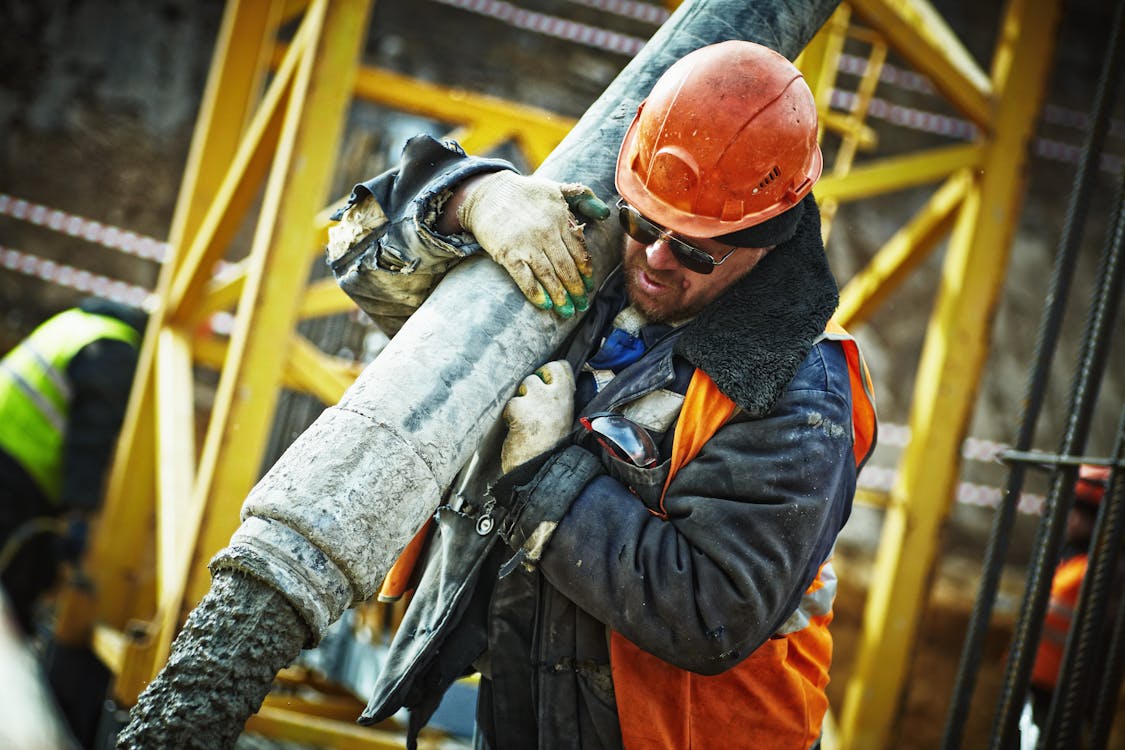Because of increased workplace health and safety measures, the incidence of most common work-related injuries and fatalities have reduced over time. Daily occupational fatalities have decreased from 38 per day in 1970 to 15 per day in 2019 according to the Occupational Safety and Health Association (OSHA), but there is still a long way to go if that number is ever going to reach zero.
Slips, trips, and falls, as well as overexertion and contact with equipment, are the most prevalent workplace accidents. All of these injuries can be avoided by taking the necessary precautions and following OSHA’s recommendations. In this article, we will go over the most common work-related injuries and offer some tips on how to avoid them.
If you are currently suffering from a job-related injury, seek medical help as soon as possible. Even though they appear minor at the time, injuries from falls, overexertion, burns, and other causes can worsen over time and lead to significant problems.

- Slips, trips, and falls
Slips, trips, and falls are among the most common workplace accidents, and they are the leading cause of worker’s compensation claims. This category contains employees who:
- slipped on a wet, icy, or oily floor.
- tripped due to uncovered edges or holes, low lighting, or debris.
- fell from skyscraper construction areas, roofs, or ladders.
Being aware of your surroundings and following OSHA’s fall protection regulations will help you avoid these types of injuries. If you work in a workplace where falls are a possibility, knowing what to do if you fall on your back is critical. Even if your injuries appear to be small, they may have long-term implications.
- Overexertion and muscle strains
Overexertion injuries, such as muscle strains and repetitive strain injuries (RSI), can result in long-term chronic discomfort and productivity loss. This form of workplace harm can be brought on by:
- incorrect lifting technique.
- lifting too heavy objects by hand.
- work that is repetitive without taking breaks.
- a structure that is collapsing.
- lifting, pushing, carrying, or throwing.
- microtasks on an industrial line.
- Poor ergonomics while typing or moving a mouse.
Your employer should have provided you with required training on how to execute physical jobs properly and how to avoid muscular strains. If they did not, have a look at ergonomics training from a reputable source. To minimize overexertion and long-term physical harm, make sure you take frequent breaks and use that time to rest and stretch, as well as using mechanical lifting equipment to lift anything more than 50 pounds.
If you are feeling any pain or discomfort as a result of overexertion, go to an urgent care center as soon as possible. Untreated injuries will worsen over time, leading you more problems in the future.
- Struck by workers, equipment, or falling objects
Everyone has walked into the sharp edge of a counter or hit a wall, but these accidents can be significantly more serious if you work in a high-risk sector. Severe hand injuries, amputated limbs or fingers, traumatic brain injuries, stress fractures or whole bone breaks, blindness, and more are examples of types of injuries that could occur in a dangerous work zone. These types of workplace injuries are frequently caused by:
- machinery that is not properly guarded.
- falling tools, debris, or other items.
- a worker’s body becoming entangled in a wire or gears.
- loads that were dropped or not properly secured.
- Pressure between the person and the source of the injury.
- heavy machinery tipping over.
- excessive vibrations.
- colliding with an object or piece of equipment.
- being pushed into any kind of hard surface.
- crashing into machines or walls.
Many of these accidents can be avoided by remaining aware of your surroundings, according to established policies and procedures, wearing the appropriate personal protection equipment (PPE), avoiding loose clothing, and putting away needless dangers.
- Crashes or collision
Whether you are driving a motor vehicle or are working around them, you are at risk of getting hurt in a crash or collision. For example, if you are working on the ground in a warehouse, you could be hit or run over by a forklift. Other instances resulting in a crash or collision could include:
- Falling from a vehicle
- Getting stuck under an overturned vehicle
- Large-truck drivers drinking and driving
- Being struck by objects falling from a vehicle
- Semi, tractor-trailer, and tanker truck crashes
When operating any type of motorized vehicle, ensure you are wearing your seat belt and taking the proper safety measures established by your employer.
- Exposure to harmful substances or environments
Those who work in loud environments or around hazardous chemicals risk severe injuries to their ears, eyes, skin, and respiratory systems if they are exposed without proper protection. Be sure to familiarize yourself with any chemical safety data sheets and wear proper ear protection, safety goggles, gloves, and any other required PPE when exposed to harmful substances or loud noises. Those who work with or around heavy-duty cleaning crews should also know how to recognize signs of bleach poisoning symptoms.
- Fire and explosions
Fires and explosions can burn your body tissue, cause severe damage to your respiratory system, and potentially cause disfigurement. This type of workplace injury is not too common, but it does have the highest casualty rate depending on how close you are to the blast. Injuries for explosions are categorized into four types based on level of impact to your body:
- Primary blast: injury caused by the blast wave unique to high order explosions
- Secondary blast: injury due to flying objects or debris displaced by the blast wind
- Tertiary blast: injury due to displacement through the air or a structure collapse
- Quaternary blast: all other injuries including crush injuries, burns, radiation, and inhaling toxic substances
To avoid these types of injuries, ensure that you and your coworkers are following OSHA’s hazard communication standards, wearing the proper PPE, and maintaining chemical safety data sheets for all chemicals.
- Violence and other injuries by persons or animals
As much as we’d like to think that fighting at work does not exist, it happens. Compounding stress and tension can result in an aggressive confrontation from an employee or customer, leading to harassment, intimidation, and even physical assault. Injury caused by animals can also be a concern for foresters and individuals working on a farm or in other environments where animals, like dogs, are present.
One of the best ways for an employee to avoid workplace violence is to set a zero-tolerance policy covering all individuals who come in contact with company personnel. When working with animals, you can reduce injury by wearing the proper attire, following guidelines set by your employer, and staying alert at all times.
Although you cannot control when an accident occurs, there are steps you can take to reduce work-related injuries and help keep yourself safe. If you feel or suspect that the safety of yourself or others are at risk, never hesitate to report your workplace to the proper authorities. If you were the victim of a workplace accident caused by negligence, contact Law Offices of Kirshner, Groff, and Diaz right away to be put in directly with a real attorney. There is no obligation to continue with our services past the initial consultation, but our experienced team will do everything we can to ensure you are aware of your rights.

